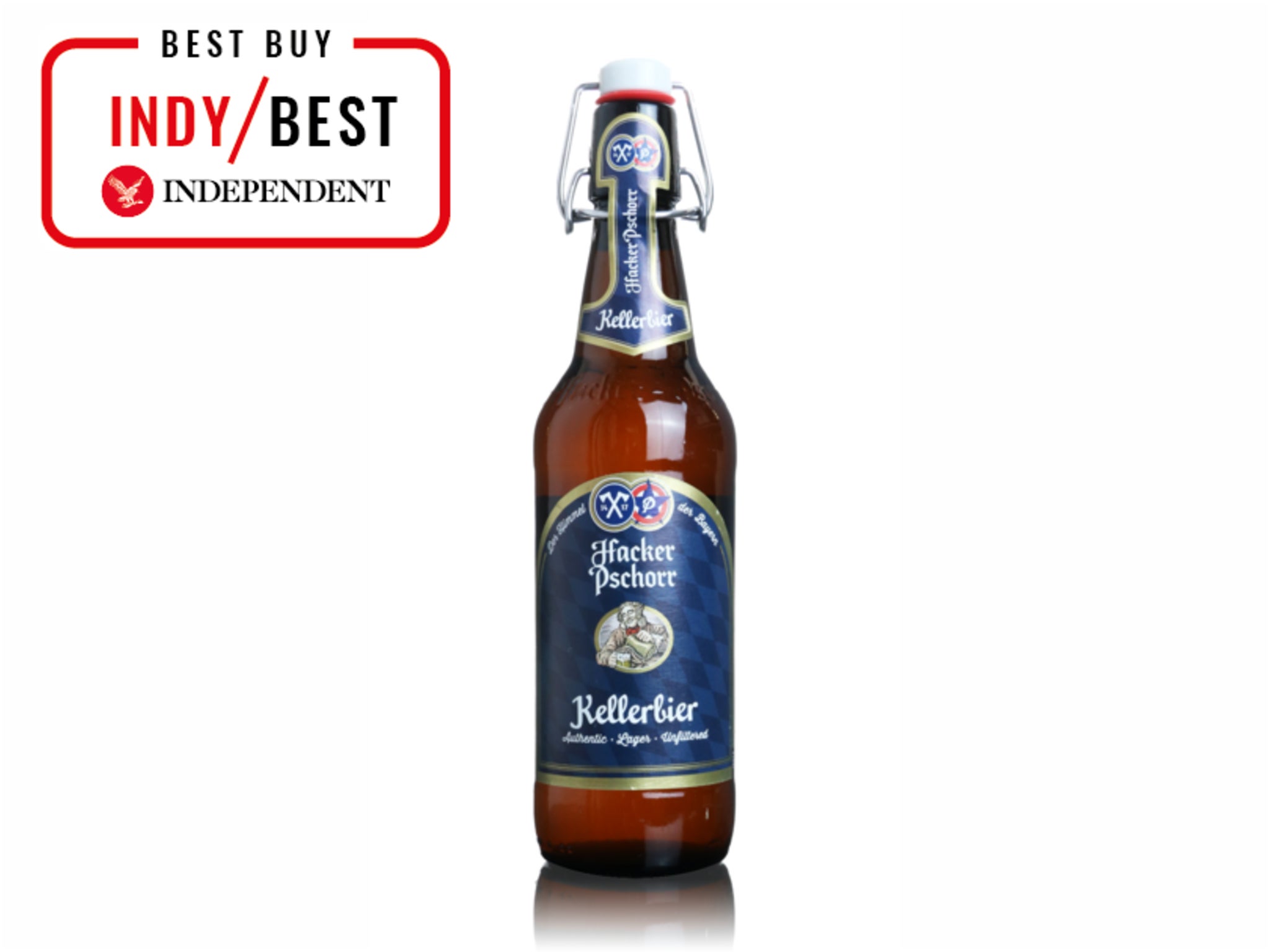
The Independent's journalism is supported by our readers. When you purchase through links on our site, we may earn commission. Why trust us?
10 best German beers to try: From lagers to pilsners
Inviting friends over to enjoy one of these punchy beverages is not the wurst idea..
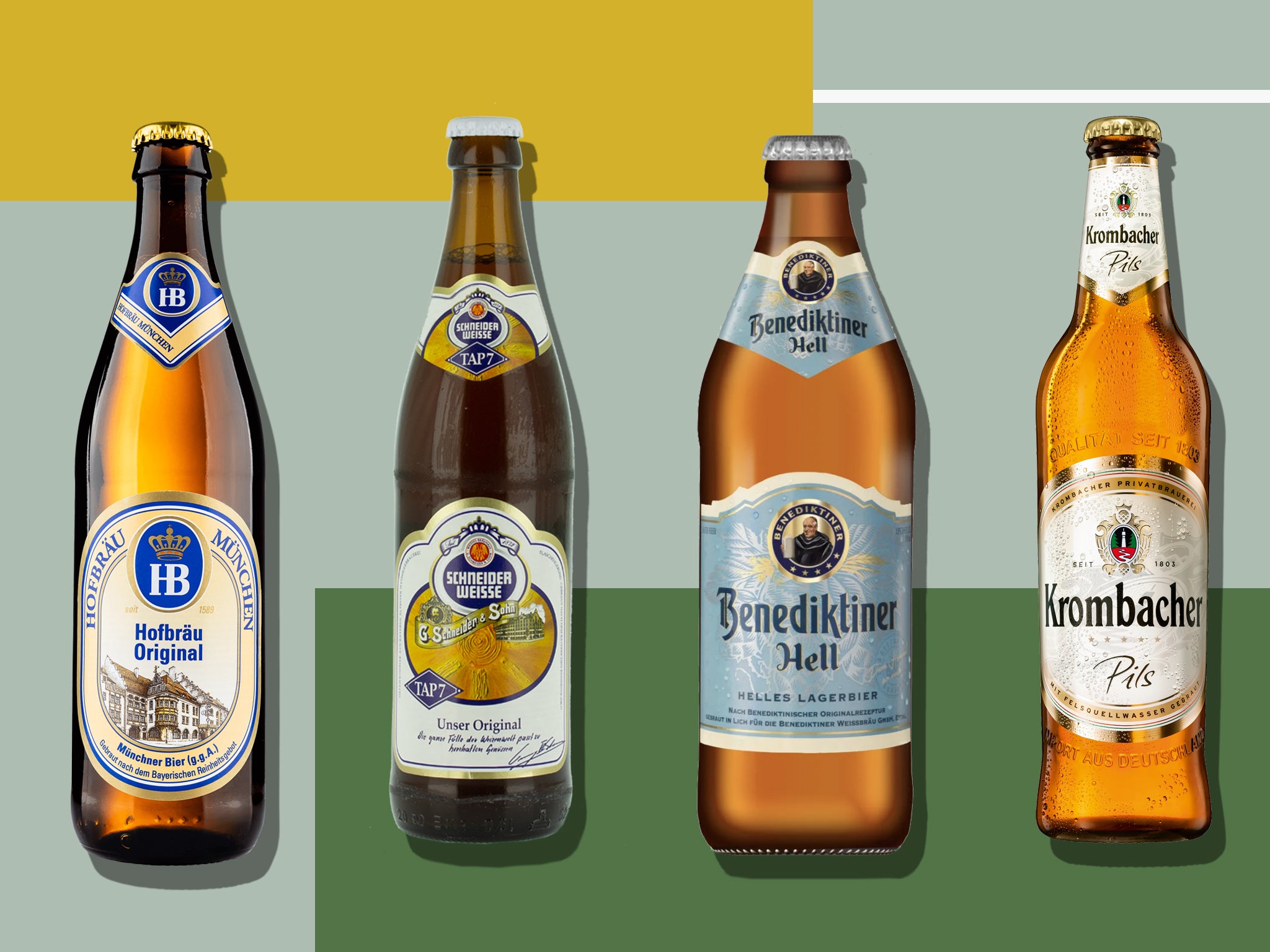
The best-known German beer styles are crisp, refreshing pilsners and hearty, hoppy wheat beers. But it’s what falls in between that makes the country’s ales so interesting.
Berliner Weisse is fermented with yeast and lactobacillus bacteria for a distinctive sour wheat flavour, while at the darker end of the spectrum there are bocks, dressed in shades from ruby to inky black. And then there’s the helles style, an early take on pilsner that often brings a little more complexity to the glass.
Virgin Wines’ beer buyer, Alex Davies, says the sheer variety of styles is what makes the country’s beer so special. But there’s also plenty of history and heritage brewed into these beers.
“German beer’s are still governed by one of the oldest laws in the world,” Davies adds. “Reinheitsgebot in 1516, otherwise known as the beer purity law, decrees that only barley, hops, yeast and water can be used to brew beer.”
How we tested
But while that’s all fascinating to know, when it comes to picking a pilsner for yourself it can be hard to know where to start. So, we’ve tasted German beers across the most popular styles and selected the best based on taste and value for money.
Read more:
The best German beers for 2021 are:
- Best overall – Hacker Pschorr kellerbier unfiltered lager, 5.5%, 500ml: £2.90, Thebottleclub.com
- Best food-pairing beer – Schneider weisse tap 7 unser original, 5.4%, 500ml: £2.69, Beersofeurope.co.uk
- Best for refreshing bitterness – Rothaus tannenzapfen pilsner, 5.1%, 330ml: £2.79, Honestbrew.co.uk
- Best lager with a little extra – Ayinger lager hell, 4.9%, 500ml: £2.79, Virginwines.co.uk
- Best refreshing German beer – Hofbrau original, 5.1%, 500ml: £2.89, Virginwines.co.uk
- Best porter style – Kostritzer schwarzbier, 4.8%, 500ml: £2.49, Beersofeurope.co.uk
- Best for easy drinking – Krombacher pils, 4.8%, 660ml: £2, Tesco.com
- Best delicate flavours – Hofmeister helles lager, 5%, 330ml: £1.99, Virginwines.co.uk
- Best for bright flavours – Augustiner helles, 5.2%, 500ml: £3.39, Honestbrew.co.uk
- Best for smoky notes – Benediktiner helles lager, 5%, 500ml: £2.89, Honestbrew.co.uk
Hacker Pschorr kellerbier unfiltered lager, 5.5%, 500ml

Best: Overall
Rating: 9.5/10
We love a swing-top bottle, though that isn’t the reason this unfiltered Bavarian beer is our top pick. It’s technically a lager but that belies its complexity. On pouring, it has a hazy, toffee hue that settles to a shimmery, semi-opaque orangey gold.
The flavours are equally layered and complex. Peach and wheat are the most prominent aromas, with honey-soaked apricots, walnuts, honey and toast revealing themselves on the first sip. There’s maltiness in the background, a slight coffee bean bitterness, a little coconut and a few crumbs of toasted malt loaf. With so many flavours competing for attention, it’s still impressively well-balanced, with a subtle syrupy sweetness binding it all together – and a lively fizz keeping it on the right side of refreshing.
Schneider weisse tap 7 unser original, 5.4%, 500ml
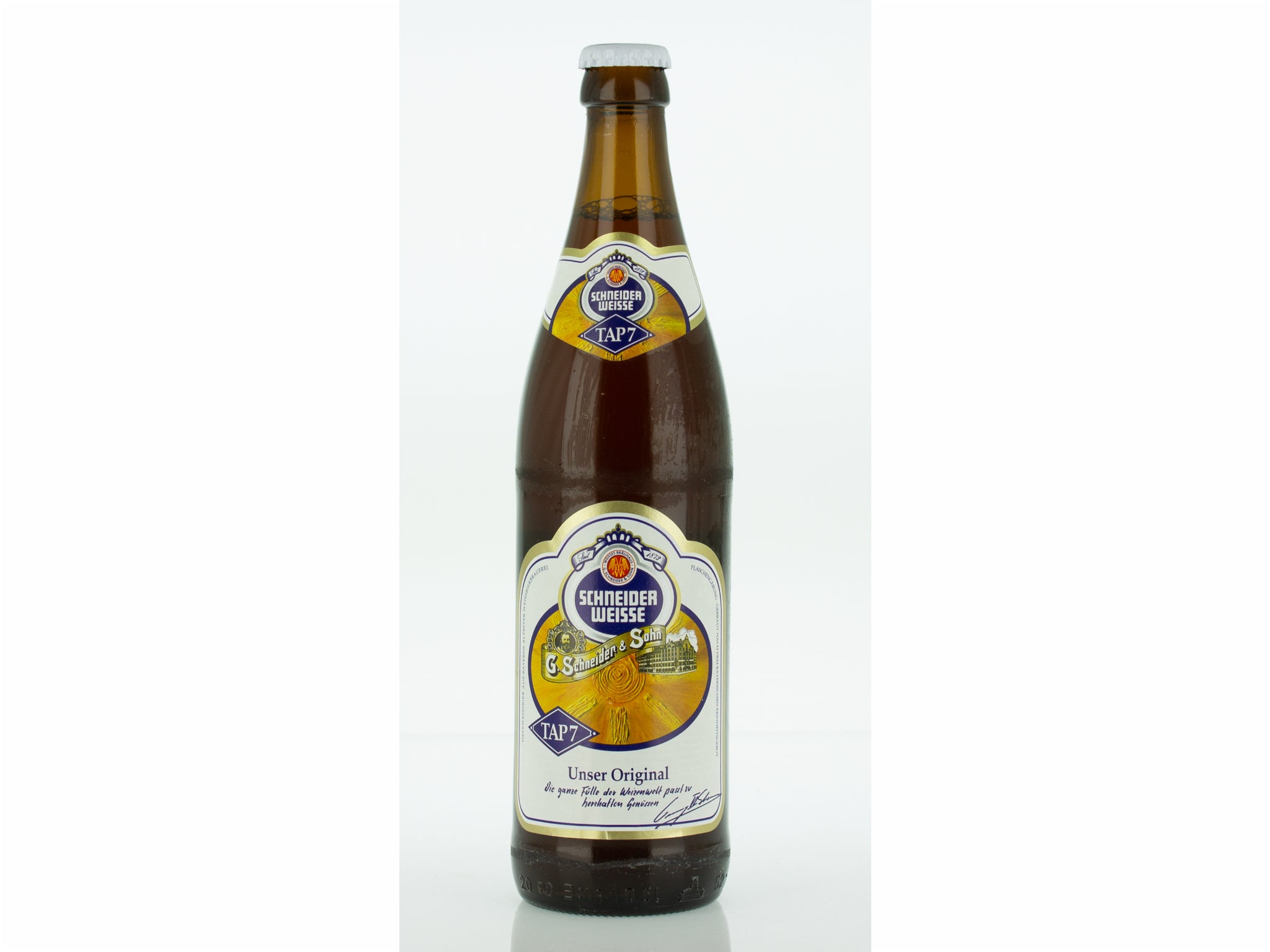
Best: Food-pairing beer
Rating: 8.5/10
The heartier German beer styles can be especially wonderful with food, and this wheat beer is a fine example. A warm toffee-ruby colour, it hugs the palate with warm cloves, allspice and nutmeg, lifted with just a sprig of coriander that also brings just enough bitterness. Herbal and lemony honey notes make this a subtle but distinctive sipper that mellows out with round flavours of bread and banana before finishing, crisply, with a whisper of smoke and a bite of burnt toast and charred orange peel.
These layers – and brisk bubbles – prevent it from becoming too sweet, while its general robustness means it works well with spicy foods and strong cheeses.
Rothaus tannenzapfen pilsner, 5.1%, 330ml

Best: For refreshing bitterness
Rating: 8/10
This classic pilsner pours with a satisfyingly frothy head and pale gold, greenish colour. And the flavours match up. There’s a refreshing, palate-wakening bitterness, like green walnuts. It’s pleasantly sharp on the first sip, and the flavours soon soften with a little honey and dried banana (like those chips you get in trail mix).
A yeastiness gives roundness and body, while a touch of toast and a little pineapple create a surprising finish. The flavour notes are individually quite rich and deep, though they’re lifted by the bitterness of the hops and a lively effervescence. A robust but approachable beer.
Ayinger lager hell, 4.9%, 500ml

Best: Lager with a little extra
Rating: 7.5/10
Falling under the helles category, this beer packs a surprising punch given its relatively low ABV. It fills the mouth like a delicious bread roll spiked with citrus peel and drizzled with honey. It’s far more refreshing than that might suggest, though, with a vibrant, crisp fizz, wisp of green apple and spritz of lemon preventing it from being cloying or sitting heavily on the palate. There’s a discernible wheatiness, though that’s far from the main characteristic. A lovely choice for when you want something well-chilled and satisfying.
Hofbrau original, 5.1%, 500ml
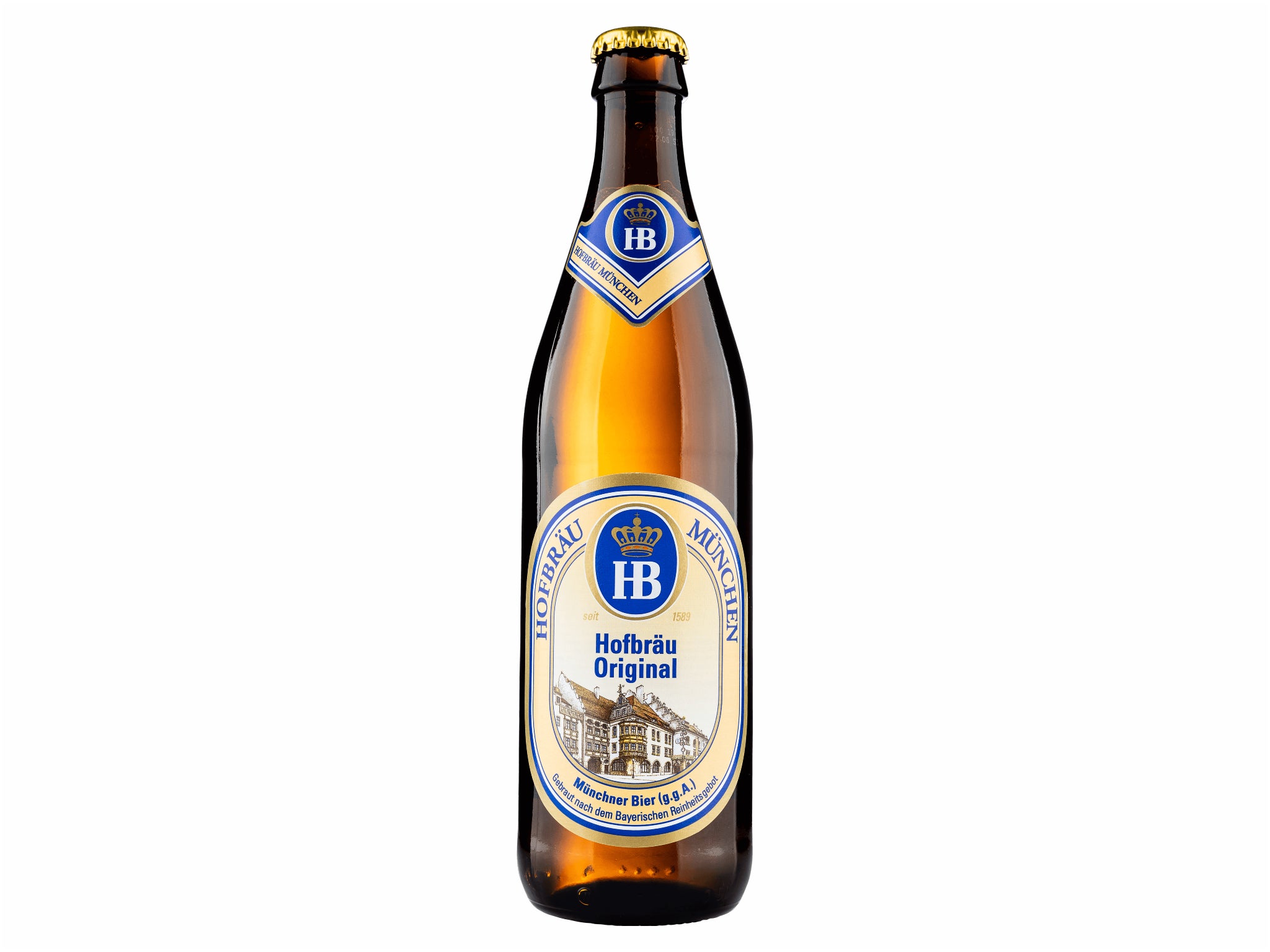
Best: Refreshing German beer
Rating: 7/10
The first sip of this syrupy-hued pilsner brings a zing of grassy, lemony hops, joined by a slick of honey and finishing with a crisp, almost sherbet-like effervescence. It’s a great example of what German breweries do so well: refreshing, lager-style beers that have a little more complexity than you might expect. There’s a little toast there, too, and a fizz that fills the mouth and livens up the honeyed wheat notes.
Kostritzer schwarzbier, 4.8%, 500ml
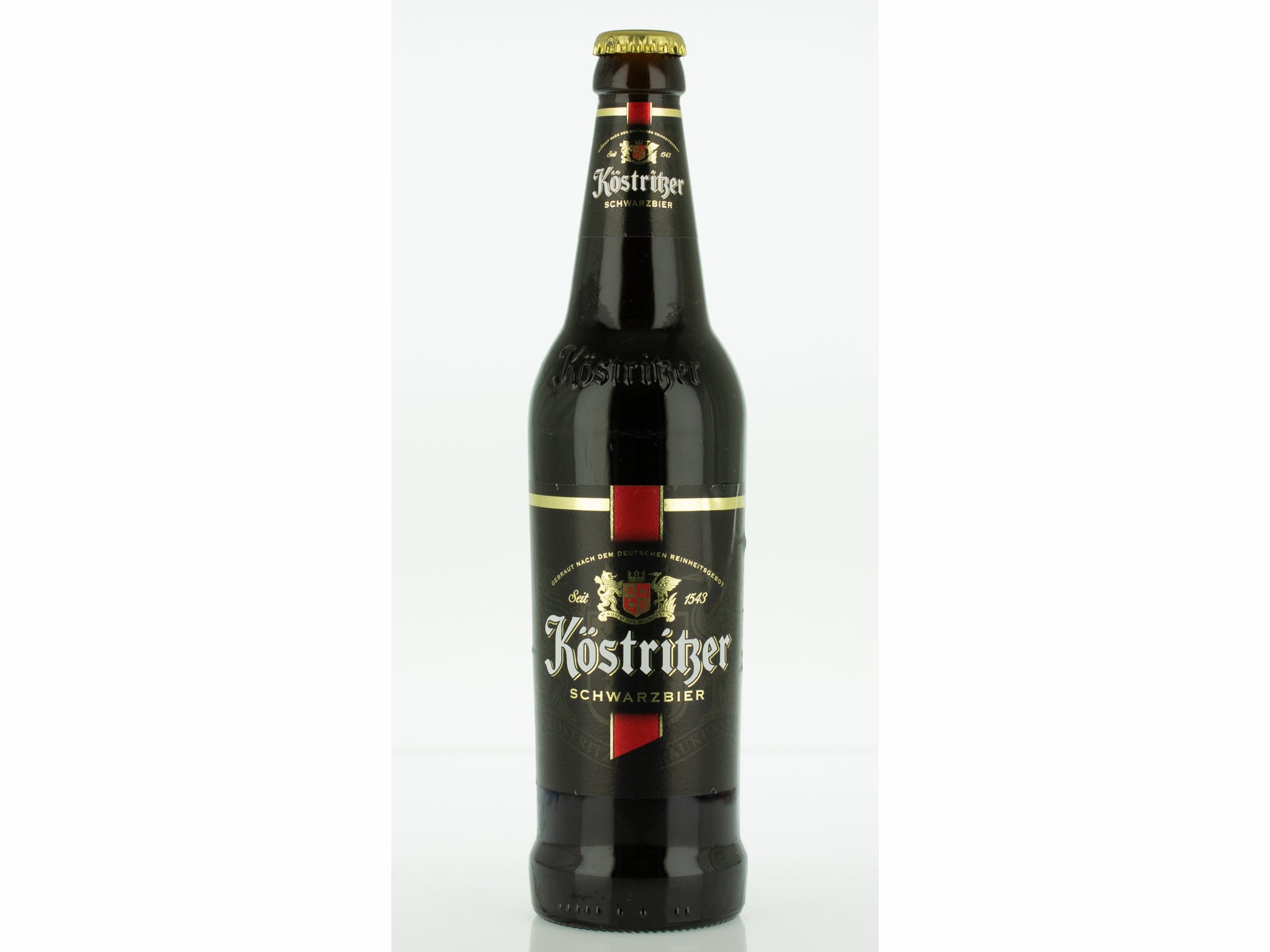
Best: Porter style
Rating: 9/10
If you were to judge this beer on its appearance, you certainly wouldn’t reach for it on a warm day. It looks like one to be sipped and savoured by a crackling fire, accompanying a bowl of rich stew or perhaps a plate of sausages. While it would be lovely in that scenario, this porter-style black beer is wonderfully refreshing, too.
The flavours start with a hit of coffee – a smooth, elegant roast, with fruity, nutty notes. Then it bursts with blackcurrants and brambles, offers a hint of cherries and chocolate, and slices through all those potentially too-rich flavours with a waft of smoke and a burst of lemon. Hearty, crisp and just lovely.
Krombacher pils, 4.8%, 660ml
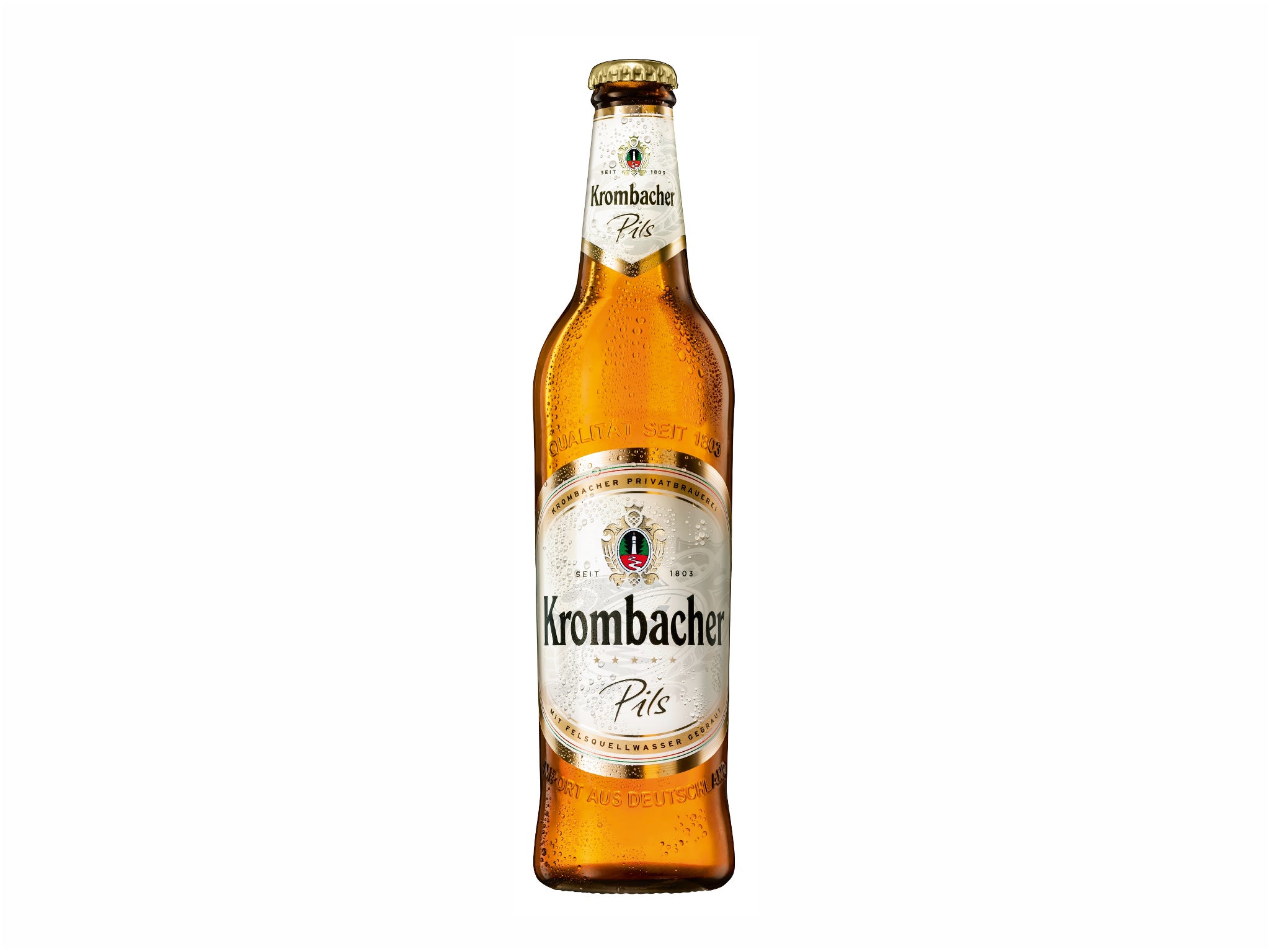
Best: For easy drinking
Rating: 7/10
Sometimes you just want a really crisp, chilled lager to quench your thirst without having to think too much about it, and this pilsner certainly hits that spot. Not that it’s basic, mind.
The pale amber lager has a subtle, honeyed sweetness that adds texture and body, coating the palate and lingering in the nicest way. It’s infinitely drinkable and light, revealing subtle notes of wheat, malt and yeast. Fine bubbles, a whisper of peach and a fine spritz of lemon keep things interesting without distracting from the refreshment.
Hofmeister helles lager, 5%, 330ml

Best: Delicate flavours
Rating: 7.5/10
We wouldn’t describe this as Christmas in a glass, exactly, though it isn’t far off. Pouring with a pale honey hue and a frothy head that stays a while, the Bavarian beer has subtle flavours of baking spice and peel, with the first sips evoking the aroma of a clove-studded orange.
All the flavours are very delicate, though, which means it’s also a perfect sunny-day sipper. There are hints of white flowers and orange blossom, joined by warmer notes of orange toffee, thin, crisp honey biscuits and toast, buttered and spread with apricot jam. A seltzer-like fizz brings it back up to refreshing, though.
Augustiner helles, 5.2%, 500ml
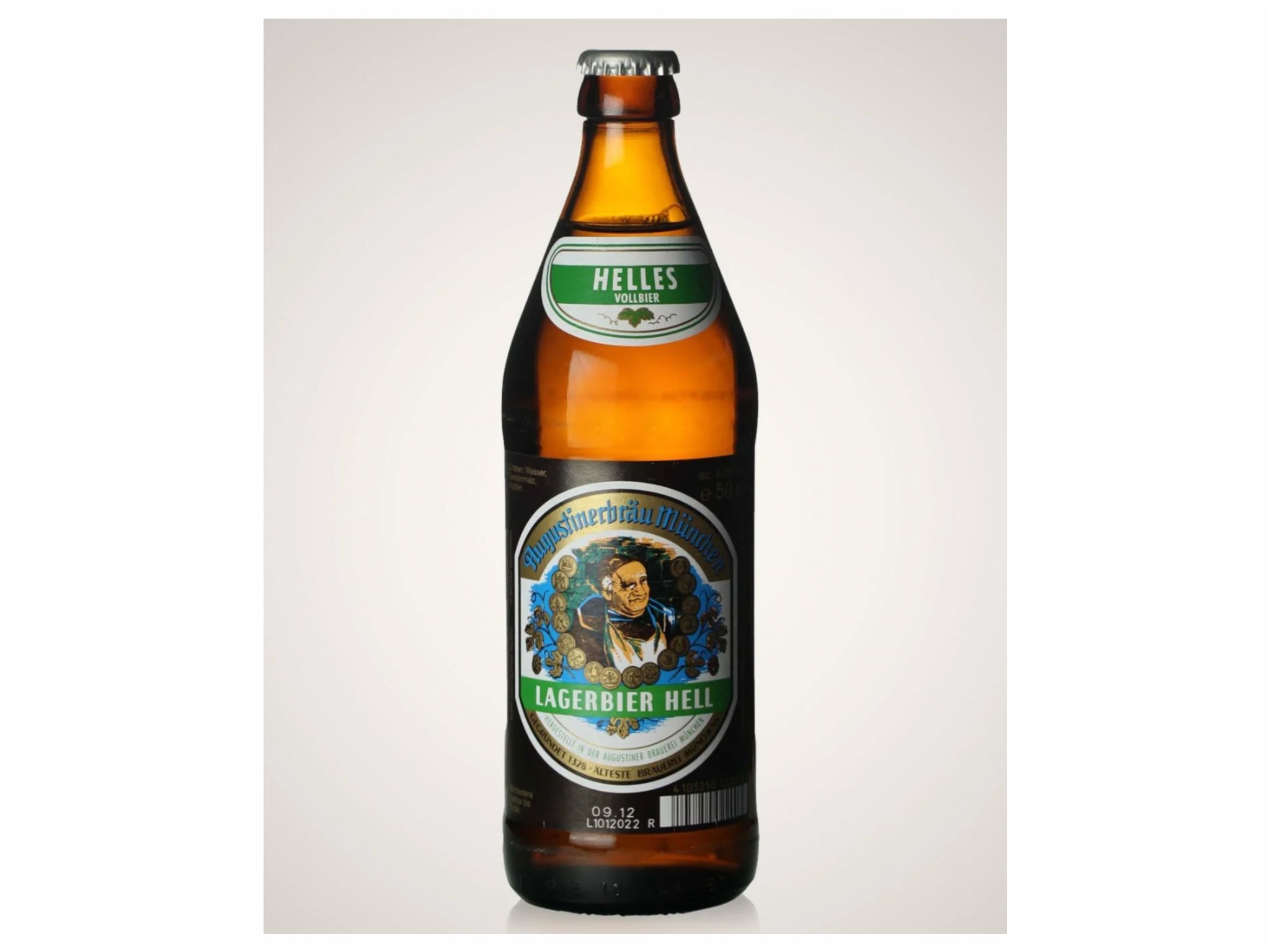
Best: For bright flavours
Rating: 8/10
The pale, shimmery straw colour of this lager is reflected in the taste. It’s bright, crisp and zingy, with notes of toast and lemon zest hitting first, followed by a little coriander, banana, fresh bread and honey. Those last few flavours are very subtle, though, serving just to balance the brighter notes and add a little more roundness and body to the beer. The crisp, clean finish cements this as an easy-drinker, with lively effervescence and a pleasant mellowness.
Benediktiner helles lager, 5%, 500ml
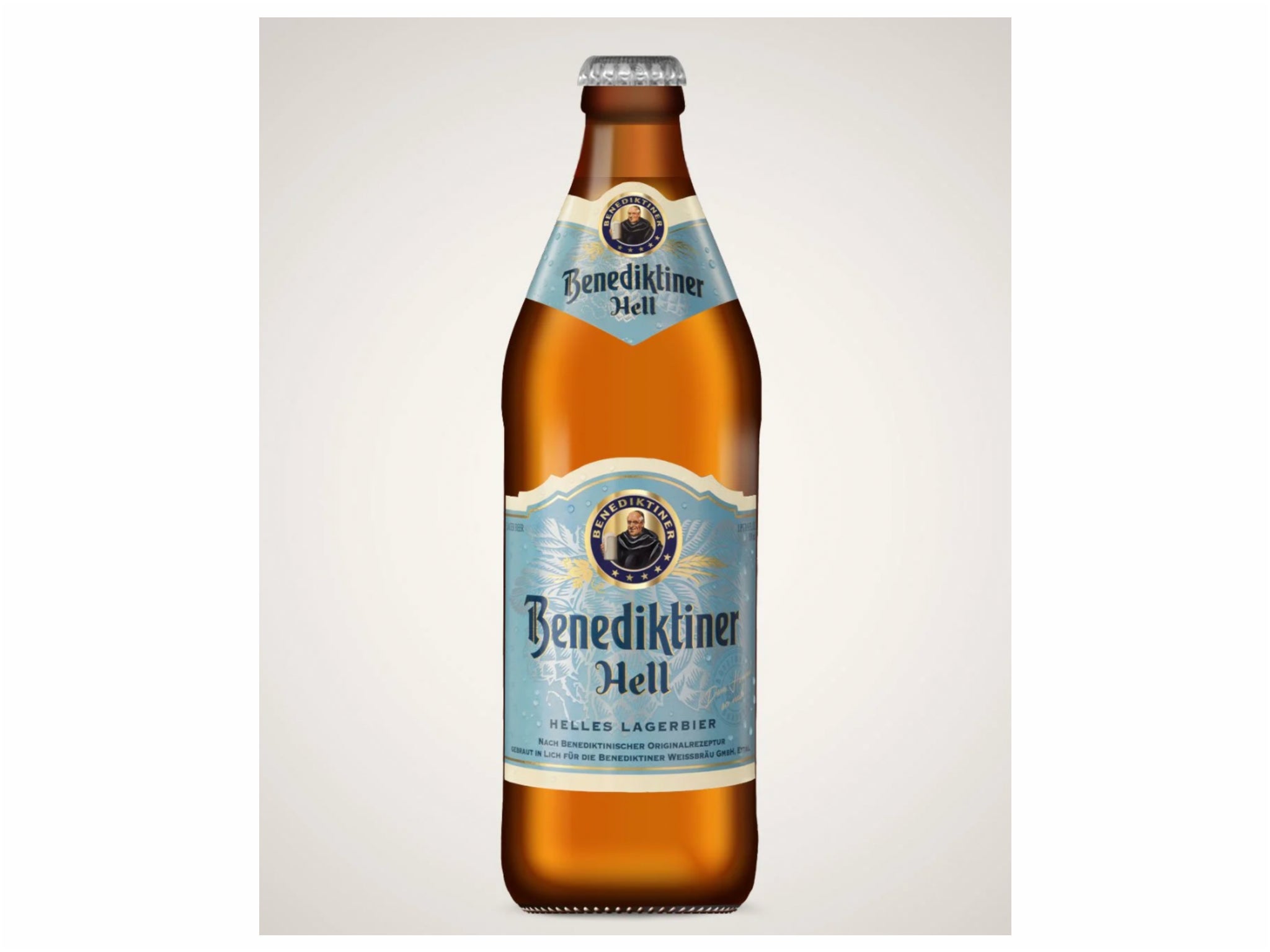
Best: For smoky notes
Rating: 7.5/10
An initial hit of smoked caramel and peach marks this out as a little different to your classic pilsner. These unusual flavours are escorted by a fine, soft fizz, followed by toffee-sweetened coffee as the bubbles disperse. We think it’s easy to drink, with just enough depth to tickle the palate and raise an admiring eyebrow. Very satisfying, with a dry finish of bitter hops rounding things off nicely.
The verdict: German beers
Pilsners dominate the market when it comes to German beers but we were surprised by how complex many of them can be, and how much variation there is, even within the category.
Every sip of Hacker Pschorr kellerbier brought a new surprise, or three, with it, and it really demonstrated how much depth one seemingly simple lager can contain.
Others had more heft then your typical lager, and we thought the porter-style Kostritzer schwarzbier – with rich flavours and a refreshing bite – was a revelation.
Voucher codes
For the latest discounts on beer, spirits and other drinks, try the links below:
We’ll drink to this round-up of the best IPAs to suit every palate
